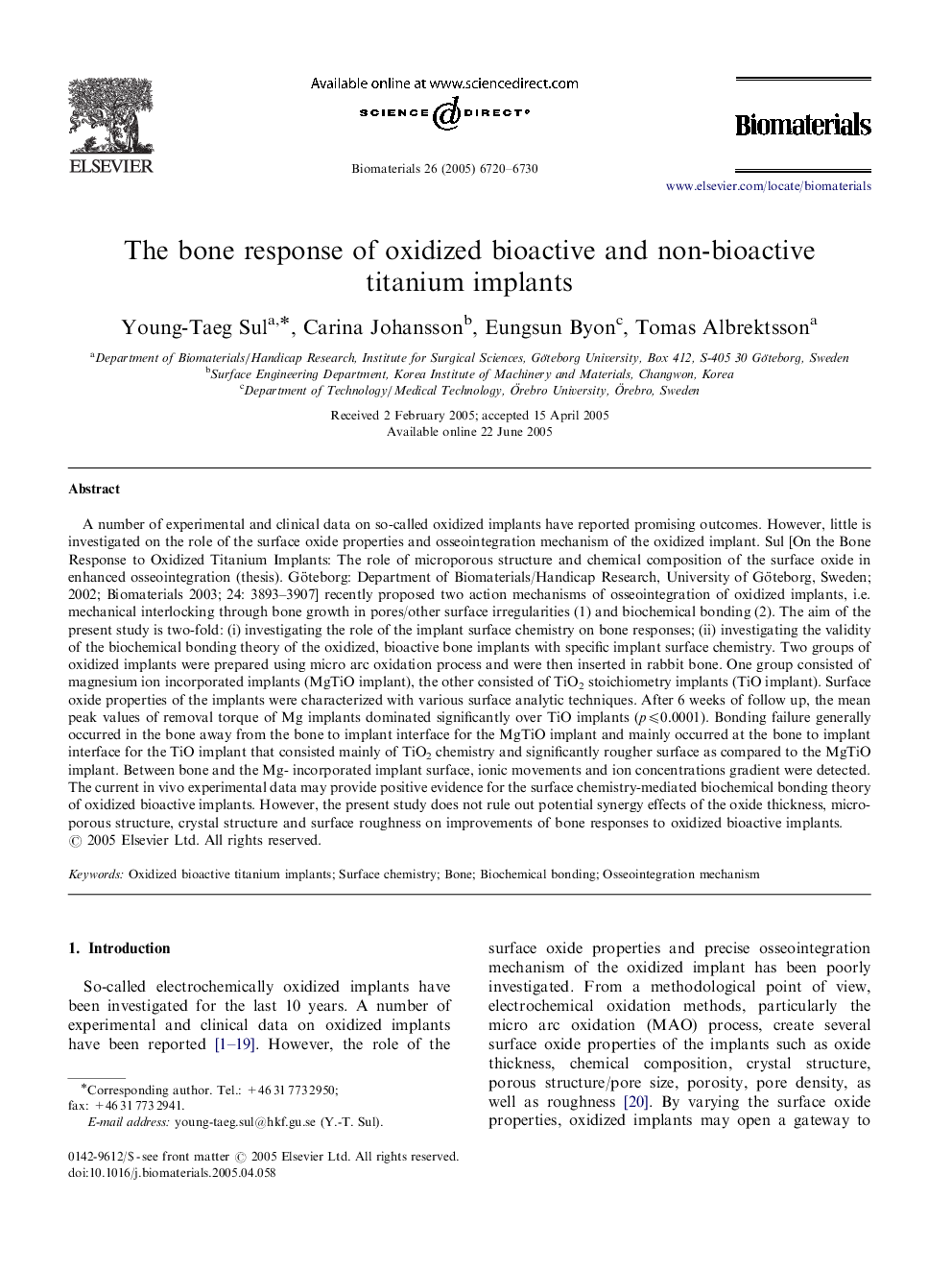| کد مقاله | کد نشریه | سال انتشار | مقاله انگلیسی | نسخه تمام متن |
|---|---|---|---|---|
| 10993 | 711 | 2005 | 11 صفحه PDF | دانلود رایگان |

A number of experimental and clinical data on so-called oxidized implants have reported promising outcomes. However, little is investigated on the role of the surface oxide properties and osseointegration mechanism of the oxidized implant. Sul [On the Bone Response to Oxidized Titanium Implants: The role of microporous structure and chemical composition of the surface oxide in enhanced osseointegration (thesis). Göteborg: Department of Biomaterials/Handicap Research, University of Göteborg, Sweden; 2002; Biomaterials 2003; 24: 3893–3907] recently proposed two action mechanisms of osseointegration of oxidized implants, i.e. mechanical interlocking through bone growth in pores/other surface irregularities (1) and biochemical bonding (2). The aim of the present study is two-fold: (i) investigating the role of the implant surface chemistry on bone responses; (ii) investigating the validity of the biochemical bonding theory of the oxidized, bioactive bone implants with specific implant surface chemistry. Two groups of oxidized implants were prepared using micro arc oxidation process and were then inserted in rabbit bone. One group consisted of magnesium ion incorporated implants (MgTiO implant), the other consisted of TiO2 stoichiometry implants (TiO implant). Surface oxide properties of the implants were characterized with various surface analytic techniques. After 6 weeks of follow up, the mean peak values of removal torque of Mg implants dominated significantly over TiO implants (p⩽0.0001p⩽0.0001). Bonding failure generally occurred in the bone away from the bone to implant interface for the MgTiO implant and mainly occurred at the bone to implant interface for the TiO implant that consisted mainly of TiO2 chemistry and significantly rougher surface as compared to the MgTiO implant. Between bone and the Mg- incorporated implant surface, ionic movements and ion concentrations gradient were detected. The current in vivo experimental data may provide positive evidence for the surface chemistry-mediated biochemical bonding theory of oxidized bioactive implants. However, the present study does not rule out potential synergy effects of the oxide thickness, micro-porous structure, crystal structure and surface roughness on improvements of bone responses to oxidized bioactive implants.
Journal: Biomaterials - Volume 26, Issue 33, November 2005, Pages 6720–6730